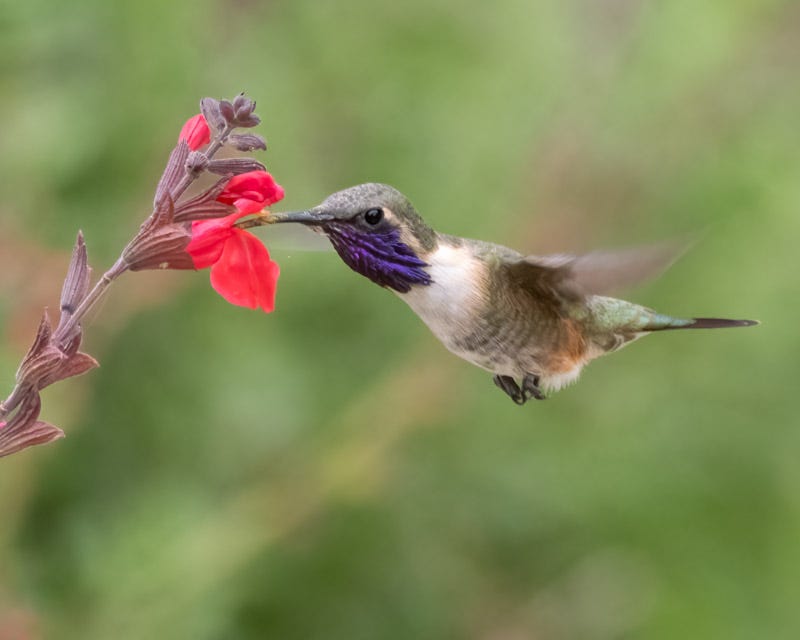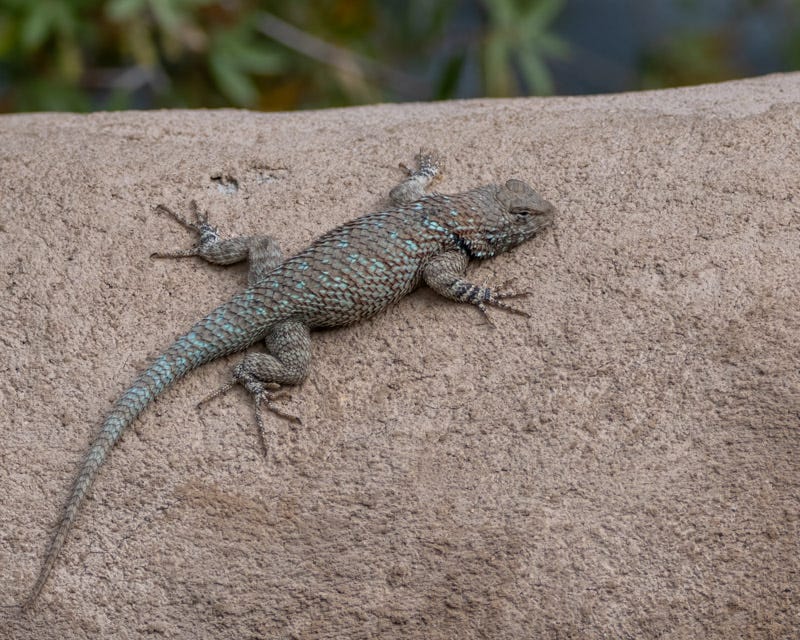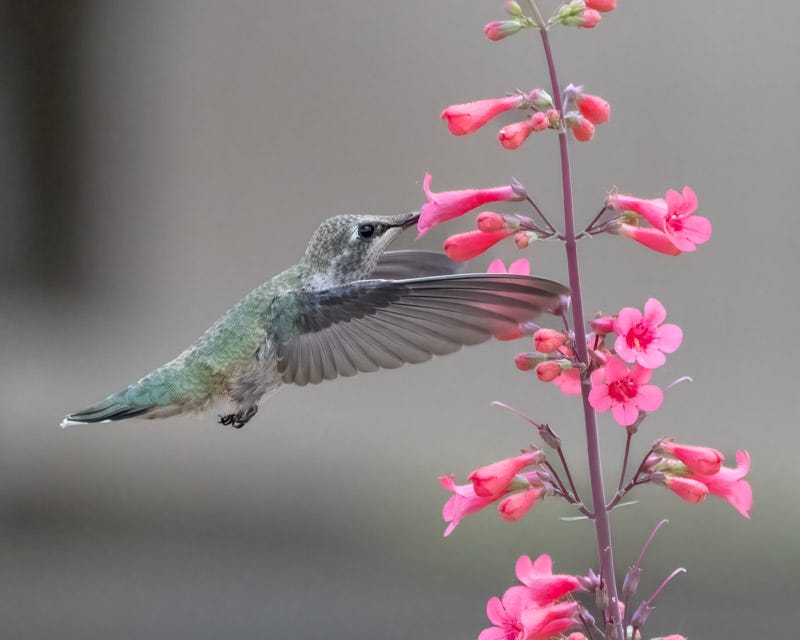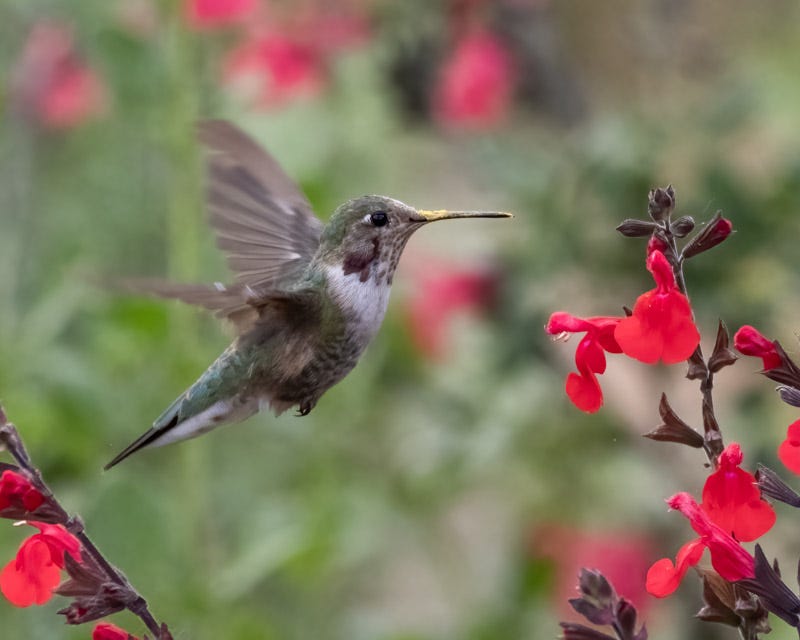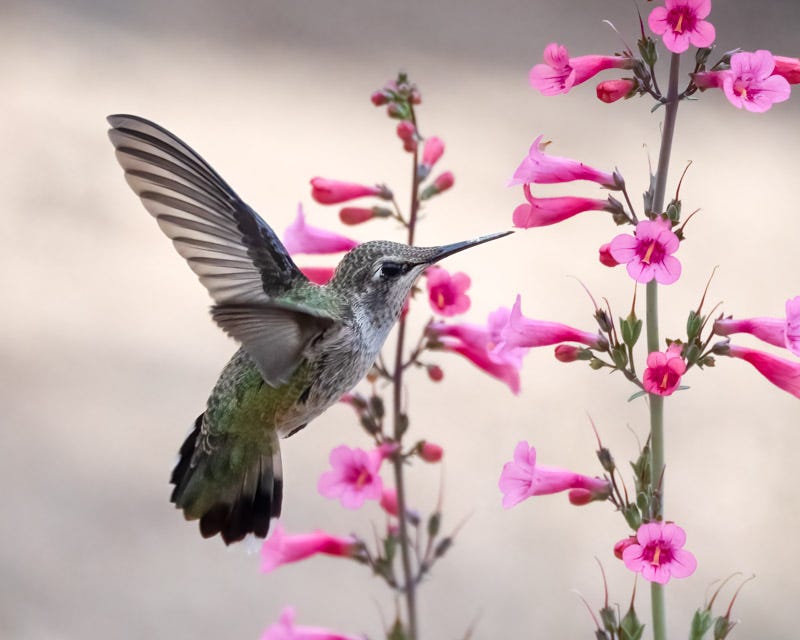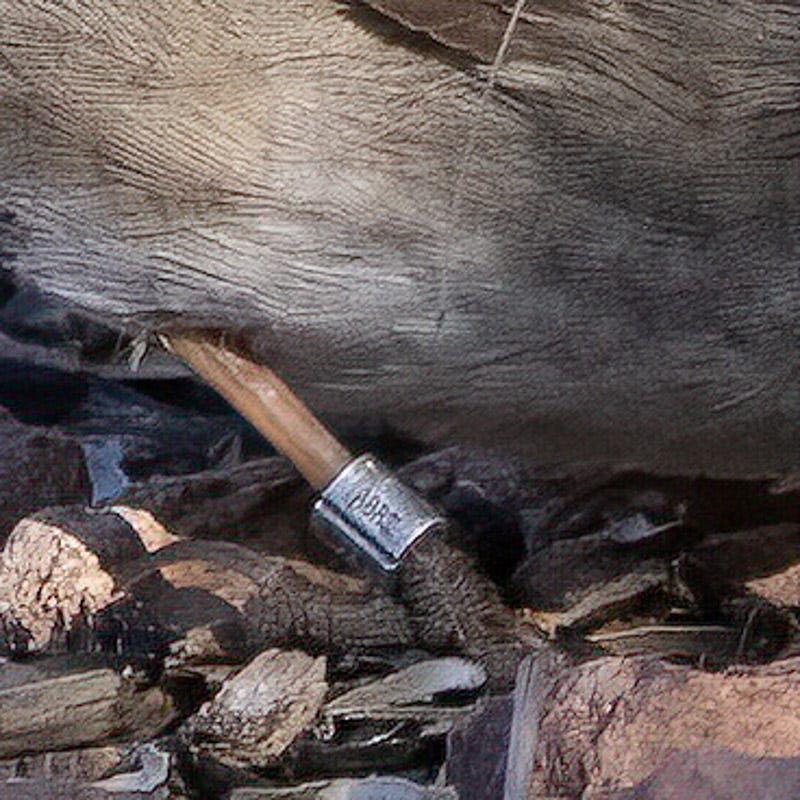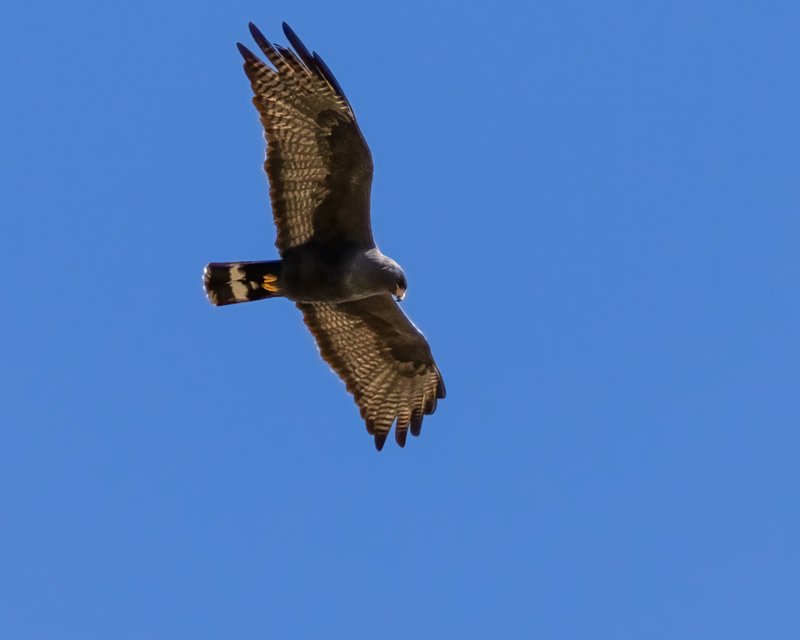Final Photos from the Huachucas
So many special things to see in the Huachuca Mountains
Here is the final set of photos from our weekend at the Huachucas. One of the birds I was really hoping to get good looks at was the Lucifer Hummingbird. This hummingbird is a migrant rarely seen in Arizona. If you hope to see one, then you ought to visit the Ash Canyon Bird Sanctuary.
I got what I was hoping to get!!! It took some waiting for the Lucifer to arrive, but the bird would feed randomly and then quickly disappear for long periods of time. It was tough to catch it. To learn more about the Lucifer, including how it got its name, read Matt Griffiths' excellent column for Tucson Audubon https://tinyurl.com/mvmph4s7
While waiting for the Lucifer, a Clark Spiny Lizard crawled out to soak up the sun. The Clark Spiny is closely related to the Desert Spiny Lizard which we regularly see in Tucson. The Clark Spiny is more common in higher elevations and the bars across its front legs are a telltale ID sign. Those turquoise scales are really nice to see. https://www.desertmuseum.org/books/nhsd_spiny_lizards.php
The flowers at Ash Canyon attracted many pollinators including this Sonoran Bumblebee. A very large species, the Sonoran Bumblebee is covered in thick yellow fur. https://www.inaturalist.org/guide_taxa/1519035
While waiting for the Lucifer Hummingbird to arrive, I watched many other hummingbirds feeding mostly at the flowers, and some at feeders. Many of the visiting hummingbirds were female. Their presence allowed me to practice trying to photograph these quick and mobile birds.
The Penstemon flowers were a favorite. Often the hummingbird would take nectar from one flower, and then meticulously move to the very next flower, working their way around and up and down the flower stalk.
Salvia flowers were also popular. This Anna's hummingbird (see the hint of red gorget feathers on the side of its neck) had pollen on its bill from the many flowers it had been feeding on.
One more shot of a hummingbird hovering while feeding.
Back at the Casa de San Pedro, a lingering White-crowned Sparrow waited in the thick vegetation for its turn at the seed feeder. Most area White-crowns have already flown north for the summer. Look carefully at this White-crowned Sparrow below, especially its bill color and its gray throat. Now get ready to compare it to the next bird.
At Casa de San Pedro, a White-throated Sparrow had been spotted. Compared to the White-crowned Sparrow above, the White-throated Sparrow has a gray bill and a big white patch on its throat. It also has a bright yellow "lore", the space between a bird's eye and its bill. One morning I spent over an hour waiting and watching one particular feeder where the bird had been seen. Finally the bird appeared and was eating spilled seeds on the ground.
Bridnote tells us how White-throated Sparrows learn to sing: https://tinyurl.com/26yhkjdr It wasn't until I began processing my photos that I noticed the White-throated Sparrow was wearing a band. Bird banding is regulated by the US Geological Survey and I sent in a report on the band, hoping to learn more about the history of this specific bird. I will let you know what response I get.
On our way back to Tucson, we stopped at Battiste's Bed, Breakfast and Birds in Hereford. Tony has a wonderful yard that is open to the public. As we were getting ready to leave, a Zone-tailed Hawk soared over the area. Zone-tailed Hawks look a lot like Turkey Vultures. Birdnote tells us more: https://tinyurl.com/4drfb52m
The Huachuca Mountains are known for their beauty and for the many bird-watching opportunities in each canyon. It is well worth the visit, especially during migration season.



